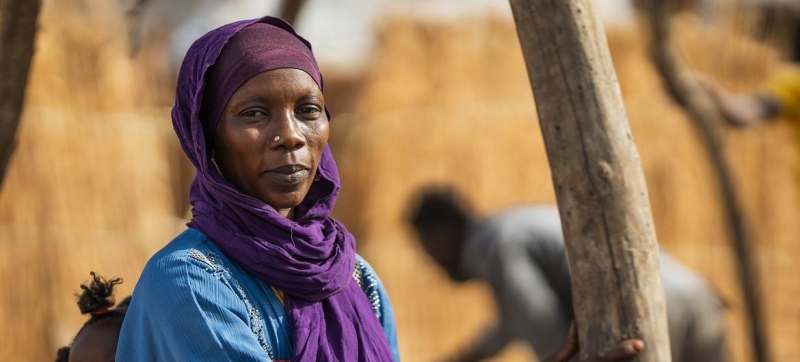- Hadi’s condition very critical: Singapore Foreign Minister |
- Asia-Pacific hunger eases, Gaza pipeline fixed, Europe hit by flu |
- UNRWA Situation Report on Crisis in Gaza & Occupied West Bank |
- Intimidation or bloodshed cannot halt Bangladesh’s march to democracy |
- Khaleda Zia integral to an important chapter in BD history: Yunus |
Extreme Weather Could Make Refugee Camps Uninhabitable

Chad: Thousands of Sudanese refugees continue to flee the war but the UN refugee agency warns that basic survival systems for refugees are already under strain.
At least 117 million people have been displaced by war, violence, and persecution, the UN refugee agency (UNHCR) said on Monday, highlighting how their plight is increasingly linked to the growing climate crisis.
“Whether it is floods sweeping South Sudan and Brazil, record-breaking heat in Kenya and Pakistan, or water shortages in Chad and Ethiopia, extreme weather is pushing already fragile communities to the brink,” the UN agency said.
Over the past decade, weather-related disasters have caused 250 million internal displacements — around 70,000 per day, or two every three seconds. Returns to Syria and Afghanistan this year contributed to lower global displacement than in 2024.
Frontline struggle
A new UNHCR report notes that three in four displaced people now live in countries where frontline communities face “high-to-extreme” exposure to climate-related hazards.
“Extreme weather is putting people’s safety at greater risk; it is disrupting access to essential services, destroying homes and livelihoods, and forcing families — many of whom have already fled violence — to flee again,” said Filippo Grandi, outgoing UN High Commissioner for Refugees.
“These are people who have already endured immense loss, and now face the same hardships and devastation again. They are among the hardest hit by severe droughts, deadly floods, and record-breaking heatwaves, yet have the fewest resources to recover.”
Protection system under strain
Around the world, basic survival systems for refugees are already under severe strain, UNHCR warned.
In flood-affected Chad, for example, newly arrived refugees fleeing the war in Sudan receive fewer than 10 litres of water per day — far below emergency standards.
Evidence suggests that by 2050, the hottest refugee camps could experience nearly 200 days of extreme heat per year, with serious risks to health and survival.
“Many of these locations are likely to become uninhabitable due to the deadly combination of extreme heat and high humidity,” the agency said.
African land degradation and climate risk
UNHCR also reported that 1.2 million refugees returned home in early 2025, half to climate-vulnerable areas. Across Africa, 75 per cent of land is deteriorating, and over half of refugee settlements are located in “high-stress” areas.
“This reduces access to food, water, and income, driving recruitment into armed groups in parts of the Sahel, fuelling conflict and repeated displacement,” UNHCR noted.
Funding shortfalls and a “deeply inequitable climate finance system” have left millions unprotected. Conflict-affected countries hosting refugees receive only a quarter of the climate finance they need, while most global funding never reaches displaced communities or their hosts.
“Funding cuts are severely limiting our ability to protect refugees from extreme weather,” Grandi said at the opening of the COP30 climate summit in Belém, Brazil. “If we want stability, we must invest where people are most at risk. Climate financing must reach communities already living on the edge. They cannot be left alone. COP30 must deliver real action, not empty promises.”
Key findings from UNHCR report:
Three in four displaced people live in countries facing high-to-extreme climate hazards.
1.2 million refugees returned home in early 2025, half to climate-vulnerable areas.
75% of African land is deteriorating; over half of refugee settlements are in high-stress areas.
By 2050, the world’s 15 hottest refugee camps — in Gambia, Eritrea, Ethiopia, Senegal, and Mali — could face nearly 200 days of hazardous heat stress per year.
By 2040, countries facing extreme climate hazards could rise from 3 to 65.
Since April 2023, nearly 1.3 million people fleeing Sudan have sought refuge in South Sudan and Chad, two of the least prepared countries for the climate emergency.

